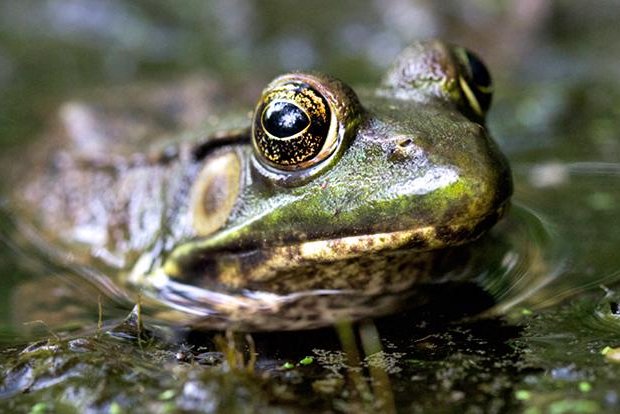A green frog. Photo by Geoff Giller/Yale
NEW HAVEN, Conn., Sept. 8 (UPI) -- Male frogs seeking a mate might have better luck in suburban ponds -- that's if they don't mind the risk of turning into females themselves.
Researchers at Yale University found suburban ponds, near shrubs, backyard gardens and manicured lawns, feature higher ratios of female green frogs than do ponds surrounded by forest. The new study, published in the journal Proceedings of the National Academy of Sciences, suggests higher levels of estrogen in suburban water are turning male green frogs female by disrupting the animal's endocrine system.
"In suburban ponds, the proportion of females born was almost twice that of frog populations in forested ponds," lead study author Max Lambert, a doctoral student at the Yale School of Forestry & Environmental Studies, explained in a press release. "The fact that we saw such clear evidence was astonishing."
Researchers didn't aim to locate the sources of estrogen in the water, but some of the ponds surveyed were connected to septic systems and sewer lines. Previous research has shown agricultural runoff and wastewater contamination near farms and water treatment plants are having similar effects on hormone regulation in frogs.
But the estrogen that's feminizing frogs in suburban ponds isn't necessarily coming exclusively from wastewater and pesticides. Plant species common to suburbs, like clover, naturally produce phytoestrogens.
"Our work shows that, for a frog, the suburbs are very similar to farms and sewage treatment plants," Lambert said. "Our study didn't look at the possible causes of this, partly because the potential relationship between lawns or ornamental plantings and endocrine disruption was unexpected."
Estrogen contamination could also have an impact on other frog species, as well as salamanders, birds and mammals found in suburban environs. As such, Lambert and his colleagues say their research is ongoing.
"Some of our lab's current work is trying to understand how the suburbs influence sexual development in other species," he said.















